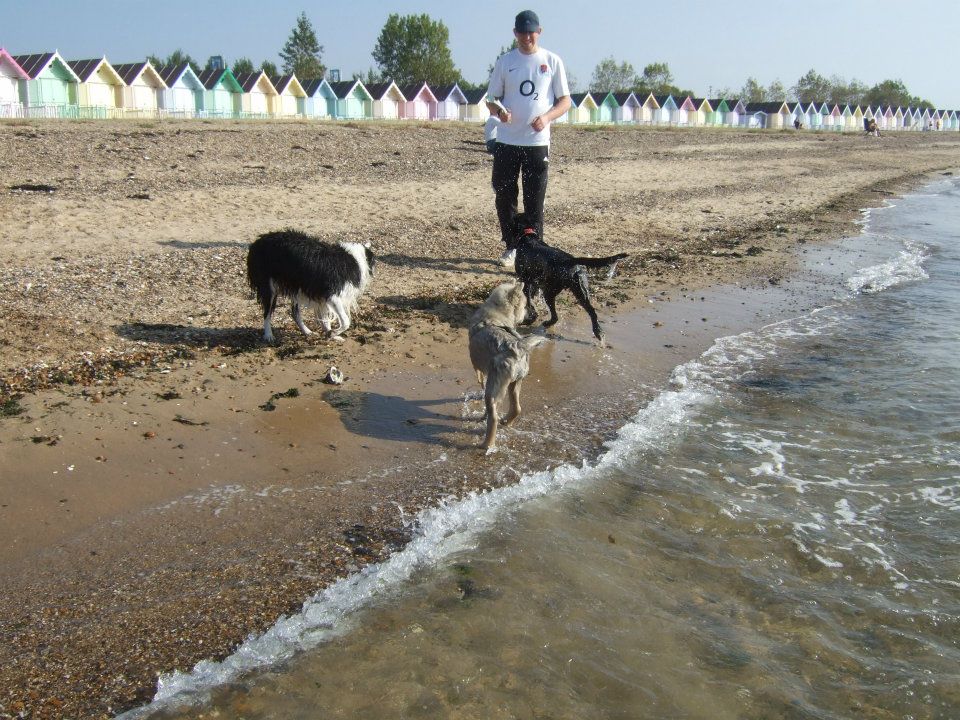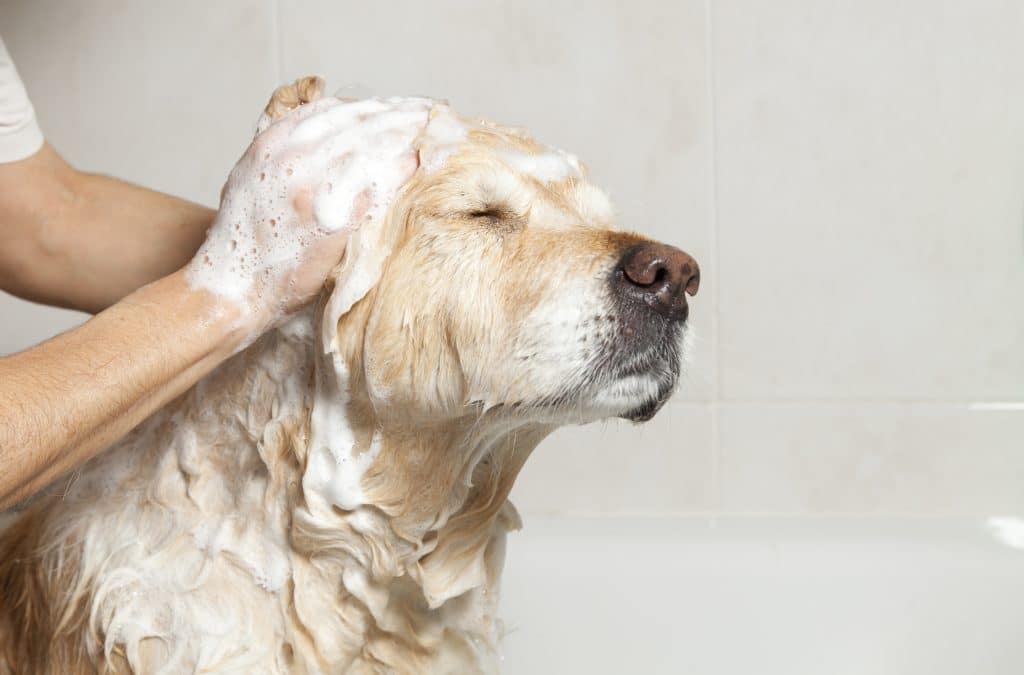
A lot of dogs love to paddle or even swim in the water. This could be a local pond, a babbling brook, a gentle stream or a day at the seaside. Dogs especially love to paddle in the summertime as the temperatures rise, as it helps cool them off whilst on their walk.
However, there are several things you should be aware of to ensure water safety for your dog.
For example, it is mistakenly believed that all dogs are “born swimmers” as the majority have the reflex to allow them to do the doggy paddle when in deep water, yet this movement won’t necessarily carry them to the edge of the pool or lake.
Are all breeds good swimmers?
Dogs can, as a rule, be categorised into those that are natural in the water, others that don’t enjoy water activities, and others you can teach to swim. Some dogs will find it awkward to master the paddling action when attempting to swim for the first time, with lots of splashing but not getting very far. However, with practice, this skill will improve.
When to introduce your dog to water
If you can introduce water play for your new pup from around 6-8 weeks onwards, they will have plenty of fun just splashing around in a bowl of water in the garden. When a little older, take them to a lake or an algae-free pond with slow-moving or still water, preferably not a river where the currents can be quite strong. Spend time playing at the pond’s edge, and look for somewhere with a gentle slope where your dog can enter the water easily. A favourite toy or even entering the water with them maybe all it takes for a hesitant dog to begin to swim.
Don’t rush things, and certainly make sure that your dog is confident in deeper water before asking him to retrieve something.
If your dog is afraid of water
It could be that your pet has had a bad experience while being in the bath at home and is very reluctant to enter the water outside. Some pets are quite timid and are apprehensive about trying a new sport. Begin by filling a kid’s paddling pool, encouraging him to play and chase his favourite toys, and rewarding him with treats and cuddles. Move onto large puddles and ponds with plenty of encouragement and enticement, but don’t rush or pressure your dog. He will soon come to see it as another fun activity.
Keep your dog safe in the water.
Water temperature plays a huge part in your dog’s safety in any water. If you couldn’t bear to stand in it yourself, it’s probably too cold for your dog to be in there for any length of time. Other safety issues are always keeping him within your sight when he’s in the water and ensuring a good recall response. If he’s a dog that sometimes ignores you when he’s not on the lead, it’s probably not a good idea to allow him to swim at the beach or in a pond.
Allow your dog to spend time in the water and have fun times; make sure that he has a good exit line of attack and that he is warm enough.
What to do and what not to do around water with your dog for safety
As the weather gets sunny and the temperature rises, you will want to get out more with your dog. A trip to the local stream or pod or a trip to the seaside. However, it is important to remember some water safety tips.
Do
Staying Hydrated. Although you are near water, it is best to discourage them from drinking it. Make sure they stay hydrated with fresh water.
Be aware of the type of water your dog is swimming in
You must know what kind of water your dog is playing in. Different types of water can provide different dangers. For example, Pools and slow-running lakes can contain stagnant or polluted water, and if your dogs drink a lot of it, they can become ill. Seawater can also be polluted and has salt, which can be harmful
Blue-Green Algae is common in many ponds, especially after hot weather.

Bath your dog after swimming.
If your dog loves to swim, giving them a hose down with fresh, clean water is essential. This will remove any possible bacteria, and algae etc. is removed from their coat.
When washing them with fresh water, ensure their ears are well rinsed to avoid ear infections. Regardless of the type of water your dog is playing in, it’s good practice to rinse your dog down with clean water after a swim and give them a dry-off, paying close attention to the ears to reduce the chances of ear infections.
Keep an eye on their stamina.
Dogs, like some children, are often eager to play and have fun even though they may be tired.
When dogs (like people) are tired, it is easier for them to get into trouble, so try and make sure they have plenty of rest.
.
Don’t
Make your dog like water or go for a swim.
While many dogs like water and will be happy to go for a swim, not all dogs do. My collie, for example, doesn’t like water, although when she fell in, it turned out she could swim.
I have seen people pick up their dogs and throw them in. Please DO NOT do this even if your dog wasn’t scared of water before. The chances are he is now.
It is important that you do not force them to go into the water.
One last point on this subject DO NOT assume your dog can swim, as not all dogs can
Never leave your dog unsupervised.
Your dog must never be left unsupervised or allowed to get out of your site when near water, as it is so easy for them to get into trouble. Even if they can swim
Ignore warning signs
Most areas, especially if they are popular areas such as beaches. These warning signs are usually in place for a reason.
The signs will normally warn you of such things as deep water, strong currents, crumbling river banks etc. Before you or your dog have fun in the water, make sure you look out for these signs, as they will help keep you safe.
Ultimately keeping your dog safe around water is about being sensible, responsible and aware. If you know there’s a strong current, deep water or sliding river banks, keep your dog on a lead to stop them from going in. They can still have plenty of fun out of the water and enjoy it another time when it’s safe.
Water Safety for dogs – possible illnesses
Blue-Green Algae
Blue-green algae are one of the most common and dangerous water-related illnesses you will encounter.
It generally appears in ponds, lakes and streams that are either very slow-moving or still. This should be avoided as it is harmful to dogs and can be harmful to humans#
As a general rule, if the pond your dog wants to enter has any algae, then it should be avoided. Whilst not all algae is as toxic as blue-green, they all give off toxins. These could affect the nervous system, attack the liver, or make them ill – be safe and avoid any ponds with algae, especially when it has built up and can be seen on the surface.
Should your dog come into contact with algae, especially blue-green algae, and starts vomiting or suffering from diarrhoea, then please get in touch with your vet and, if possible, take a sample of water.
It is also recommended to keep charcoal in stock as you can give this to your dog while waiting to see the vet.
Leptospirosis (Weil’s disease) in dogs
Leptospirosis can be found all over the world. This bacterial infection is usually carried by the urine of the female rat; the Leptospira bacteria can course things such as kidney and/or liver failure if the dog ingests any of the contaminated water
As with Algae, it is much safer to avoid any stagnant water, which probably has a high bacteria content
As previously mentioned, make sure that your dog is washed down with fresh, clean water at the end of every swim to help avoid problems
If you are planning on regular outings where your dog is likely to go swimming, then talk to your vet. They can vaccinate your dog when he is a puppy and then provide annual boosters
We hope you enjoyed our water safety for Dogs article and may be interested in dogs and frozen ponds.

